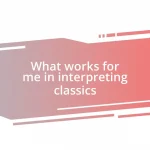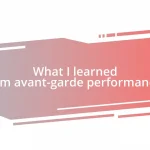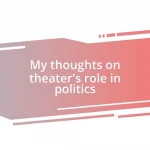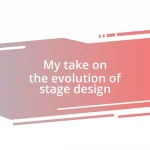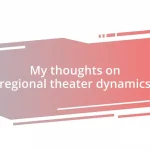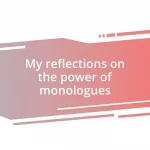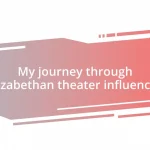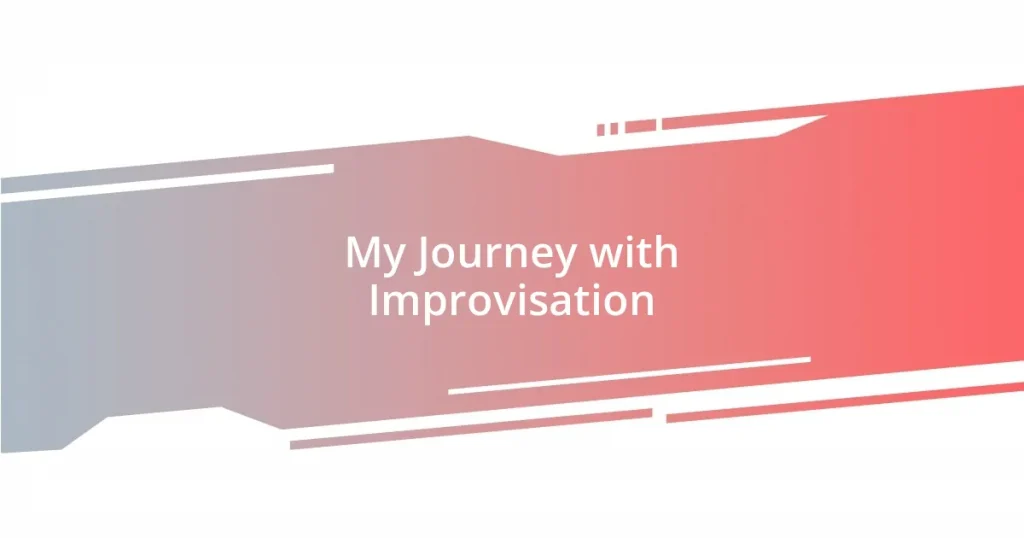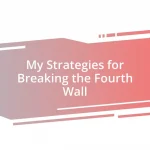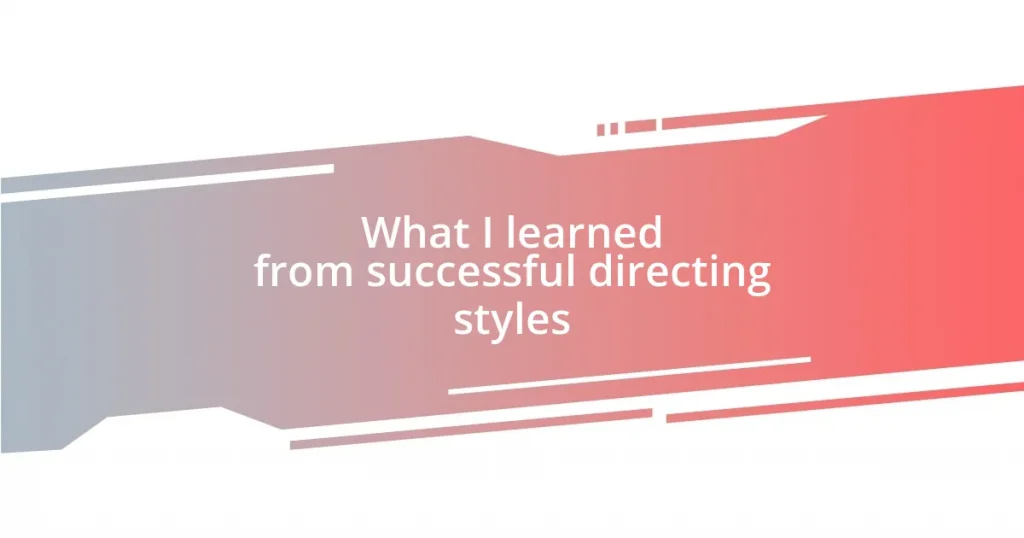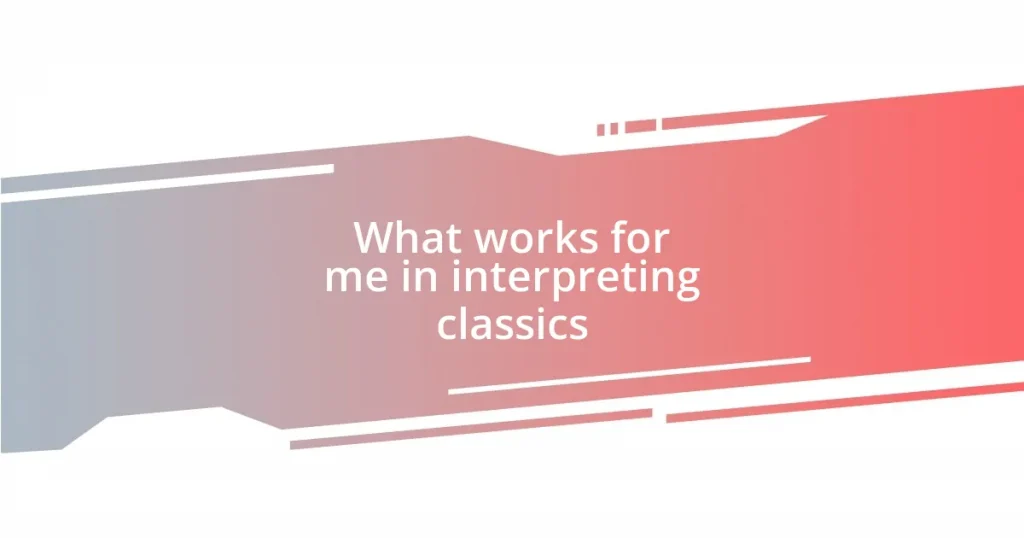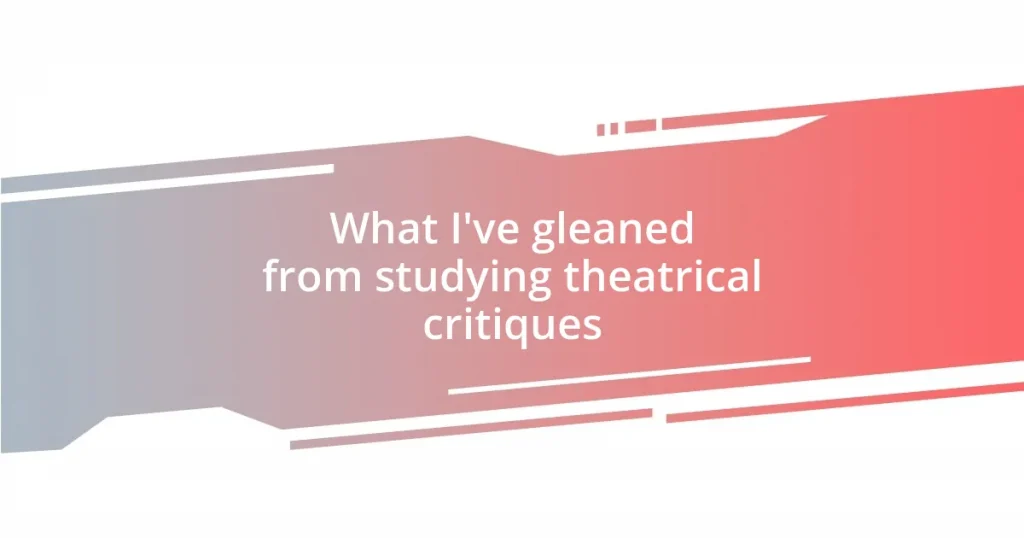Key takeaways:
- Improvisation fosters spontaneity and creativity, encouraging participants to embrace the unexpected and trust their instincts.
- The principle of “Yes, and…” enhances collaboration and connection among improvisers, enriching the creative process.
- Overcoming fear through laughter and vulnerability strengthens improvisation skills and deepens bonds between participants.
- Improvisation techniques, such as spontaneity drills and active listening, can be applied beyond performance, enriching daily interactions and adaptability.
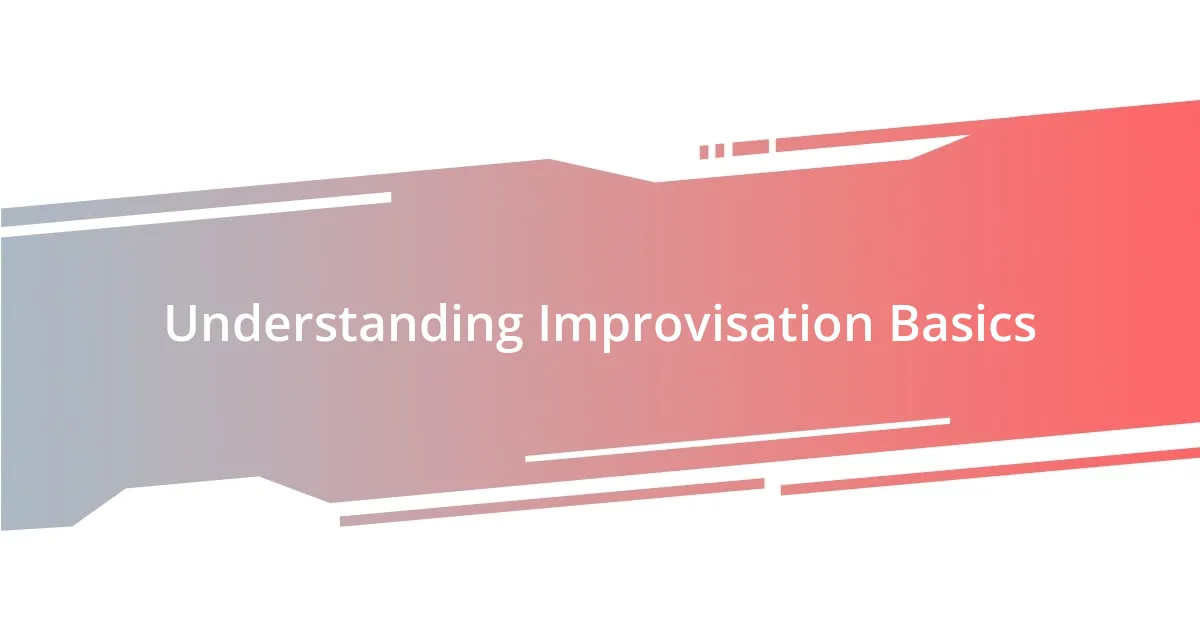
Understanding Improvisation Basics
Improvisation is all about spontaneity and creativity, which can be both exhilarating and terrifying. I remember my first improv class; I walked in feeling like a deer in headlights, unsure of what to expect. That fear soon transformed into a rush of joy as I realized that the essence of improv lies in embracing the unexpected.
At its core, improvisation demands a willingness to let go of control. Have you ever found yourself overthinking a response in a conversation? In those moments, I’ve learned that trusting my instincts often leads to the most authentic exchanges. It’s like a dance where you have to respond to your partner’s movements rather than choreographing each step ahead of time.
Another fundamental aspect of improvisation is the concept of “Yes, and…” This simple phrase encourages us to build on each other’s ideas, creating a fluid collaborative environment. I’ve seen how this mindset not only enhances creativity but also fosters connection among participants. When I embraced this principle, I noticed that not only my performance improved, but my appreciation for my fellow improvisers deepened dramatically as we crafted stories together.
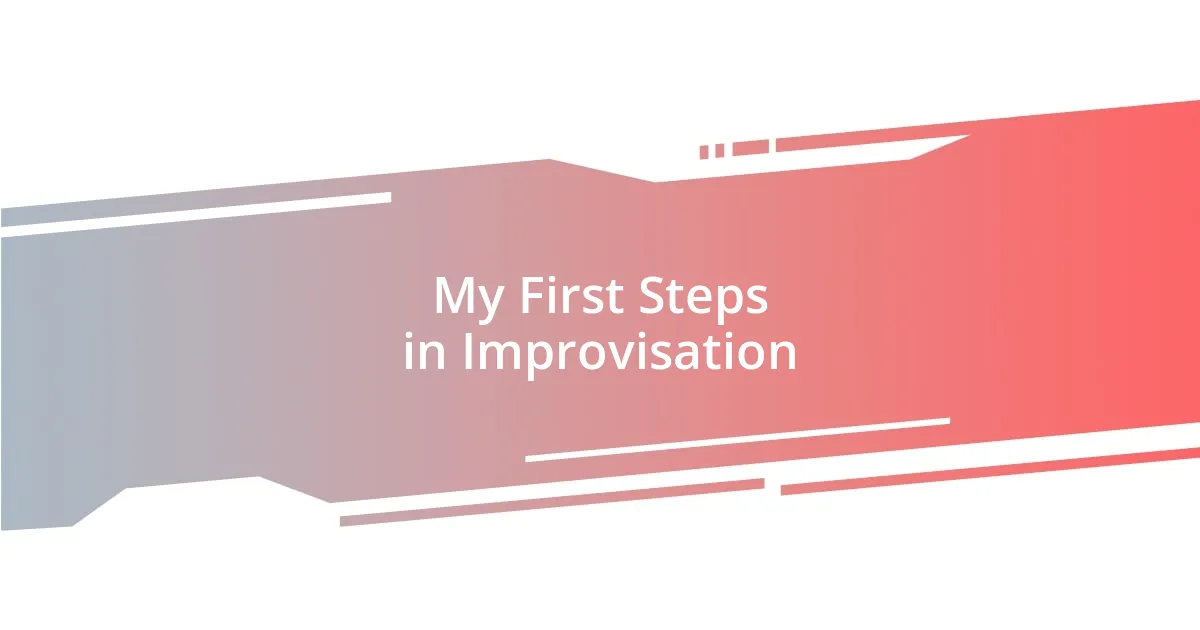
My First Steps in Improvisation
My first foray into improvisation felt like stepping off a cliff without knowing what lay below. I recall the nervous laughter echoing around the room during those initial exercises, where we were asked to introduce ourselves in a silly voice. There was a moment when I thought, “What if I look foolish?” But then I watched others dive in fearlessly, and I realized that vulnerability was part of the magic.
- Initial Nervousness: I felt butterflies in my stomach, unsure of how I’d fare.
- First Exercise: Introductions in funny voices broke the ice and encouraged laughter.
- Finding Courage: Witnessing others’ boldness gave me the push to let go of my inhibitions.
As the class progressed, I discovered that accepting the unexpected and navigating through awkward moments became easier. There was one instance when my mind went blank while trying to respond to a fellow actor’s scenario. Instead of panicking, I chose to roll with it. I blurted out something ridiculous, and the laughter that followed created an instant bond among us. It was then I understood that improvisation isn’t just about performance; it’s about connection and shared joy in the unexpected.
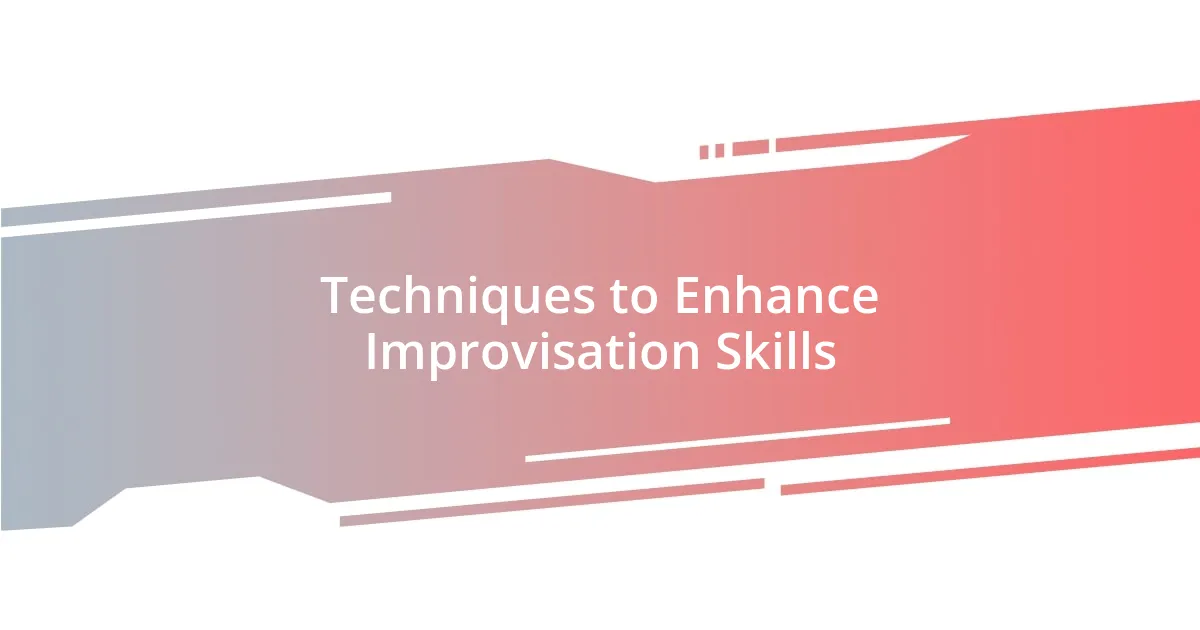
Techniques to Enhance Improvisation Skills
Improvisation thrives on spontaneity, and one technique I found immensely helpful is practicing spontaneity drills. In one exercise, we had to spontaneously name something we’d see in a grocery store, passing the timing ball among ourselves. The thrill of coming up with ideas on the spot made my mind race, igniting a flame of creativity. This kind of quick thinking can be applied to daily conversations, encouraging a more natural flow in dialogue.
Listening is another indispensable skill for effective improvisation. I learned that genuinely tuning into others fosters a sense of connection, making it easier to build on their contributions. I remember during an improv scene, my partner introduced a prop that I hadn’t anticipated—a rubber chicken, of all things! Instead of shying away or cracking a joke out of context, I embraced it and integrated it into the storyline. This willingness to engage deeply with my partner made the performance truly memorable and taught me that being present can vastly improve my improvisational skills.
One last technique I’ve adopted is visualization exercises. These exercises encourage you to picture scenarios before you face them. I often visualize everyday situations where I might need to improvise—like a casual chat at a party. By imagining these interactions, I boost my confidence and prepare my mind for whatever comes next. When I walk into real conversations, I feel more equipped to handle surprises and embrace what unfolds naturally.
| Technique | Description |
|---|---|
| Spontaneity Drills | Encourage fast thinking through quick-response exercises, enhancing creativity. |
| Active Listening | Foster connection by truly tuning into what others say, making collaboration seamless. |
| Visualization Exercises | Prepare for real scenarios by picturing them beforehand, boosting confidence. |
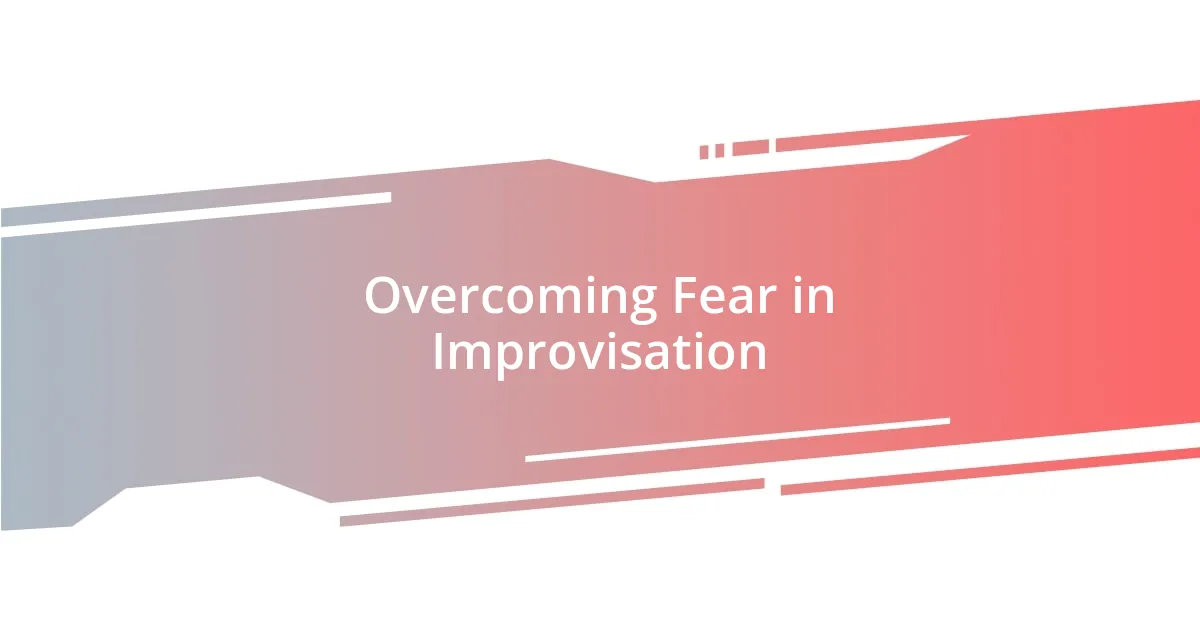
Overcoming Fear in Improvisation
Overcoming fear is a critical part of the improvisation journey. I remember one session where we had to dive into a “hot seat” exercise, where individuals faced the spotlight while others peppered them with unexpected questions. My heart raced at the thought of being up there, and as I watched a friend enthusiastically tackle the challenge, I began to wonder—what if I just allowed myself to enjoy the moment? This shift in perspective was liberating. Instead of fixating on looking foolish, I focused on the joy of spontaneity, and soon the fear melted away.
What surprised me was how laughter served as an antidote to fear. During a particularly intense scene, I found myself fumbling over lines and feeling heat rush to my cheeks. In that moment, I dared to laugh at my own blunders. The room erupted in laughter, and I realized that everyone else felt the same vulnerability. This experience taught me that embracing mistakes not only eases my anxiety but also fosters a richer experience for everyone involved. Isn’t it fascinating how laughter can turn fear into camaraderie?
As I continued to engage with improvisation, I understood that the fear of judgment often paralyzes us. I vividly recall a time during practice when I hesitated to contribute an idea about a story we were creating together. My mind raced with thoughts like, “What if it doesn’t fit?” But then I embraced the truth: every idea matters. When I finally shared my thought, the energy shifted, and suddenly my piece wove seamlessly into our collective narrative. This moment underscored that overcoming fear not only liberates me but also enhances the entire creative process. Isn’t that a powerful realization?
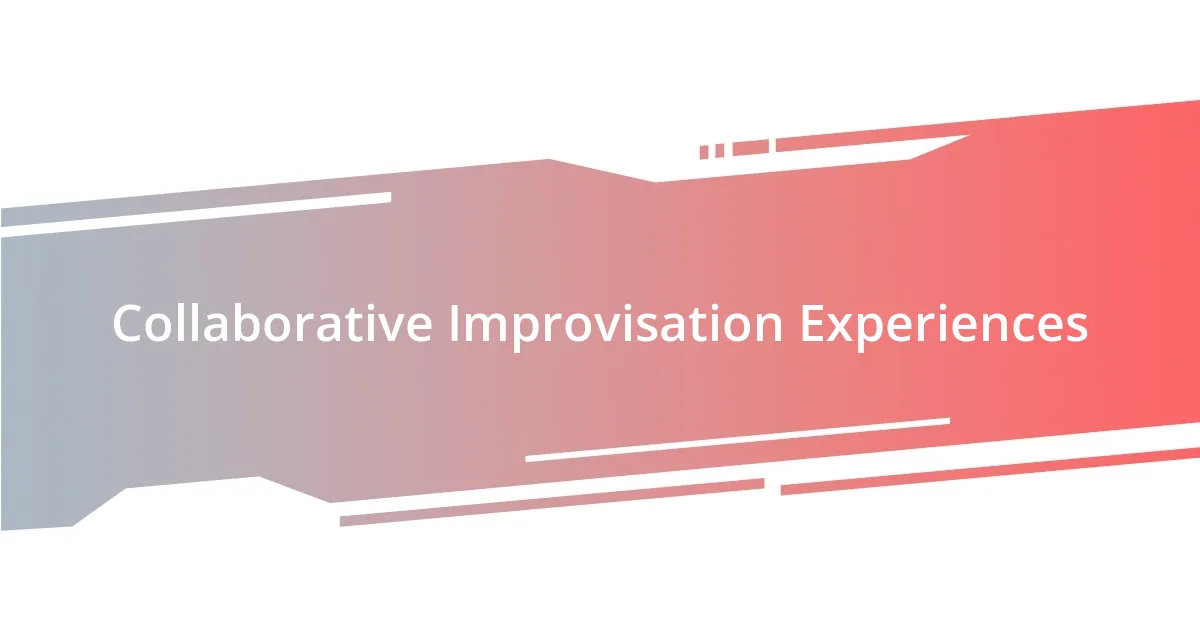
Collaborative Improvisation Experiences
Collaborative improvisation can be a thrilling blend of ideas and energy, igniting creativity in ways I hadn’t anticipated. One memorable instance was during a group workshop where we were tasked with building a story together, each person contributing a line without prior discussion. The moment it was someone else’s turn, I felt a mixture of excitement and anxiety. What if my line seemed out of place? Yet, as I listened to my fellow improvisers, I realized how their unique perspectives shaped my own thoughts. It became clear that our collective contributions turned a simple narrative into something rich and layered.
I often reflect on how collaboration amplifies the joy and spontaneity of improvisation. For example, one day, while performing a scene with a close-knit group, we decided to introduce characters from different time periods. The laughter and creative clashes that ensued were electric! I threw in an unexpected medieval knight, and to my surprise, my partner responded with a futuristic robot. What struck me was how each character influenced the other, allowing us to weave a narrative that was whimsical yet cohesive. Isn’t it fascinating how collaboration can turn the unpredictable into pure magic?
Engaging with others during improv doesn’t just lead to better performances; it builds a sense of community. I cherish the moments when someone bounces an idea back to me, adding their twist to my initial thought. I remember a playful back-and-forth in one session where my character was a detective investigating a missing sandwich. My partner added a hilarious twist by claiming to be the sandwich’s “guardian.” Instead of feeling overshadowed, I felt empowered to elevate the scene. Instances like this teach me that each improvisational experience is a shared journey, reminding me that we create something beautiful together when we trust one another and collaborate fully.
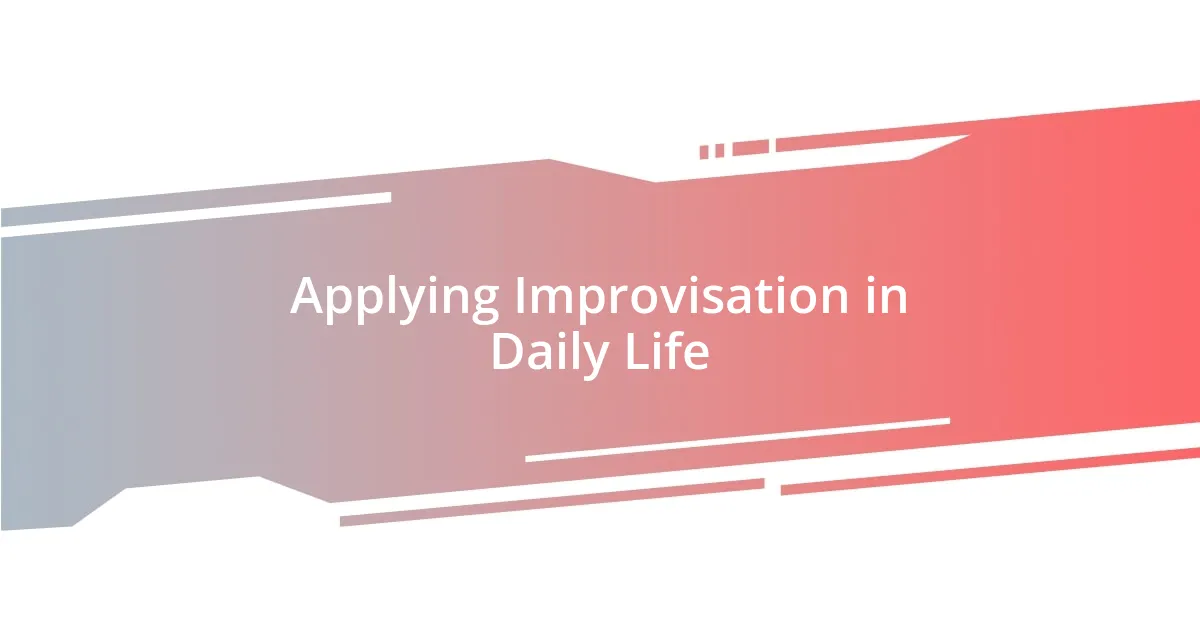
Applying Improvisation in Daily Life
Improvisation isn’t just confined to the stage; it spills into our daily lives in unexpected ways. For instance, I once found myself in a grocery store with a cart full of ingredients for a recipe I’d never tried before. In the midst of pondering if I truly had everything, a sudden idea struck me: why not let the ingredients inspire the dish instead? I picked a random spice and decided to build my meal around that. Embracing this spur-of-the-moment decision shifted my cooking from a chore to an adventure.
I also apply improvisation when facing everyday challenges, like unexpected changes in plans. Just last week, a friend canceled our dinner, and rather than sulking, I turned it into an opportunity. I ventured out to a new café I’d been curious about and ended up striking up a conversation with a fellow patron. That spontaneous dialogue led to lasting connections. It’s intriguing how embracing the unexpected can turn a dull evening into a delightful experience, don’t you think?
Furthermore, improvisation has enhanced my approach to work. During team meetings, there are moments when discussions take a turn I hadn’t anticipated. Rather than forcing my agenda, I’ve learned to embrace the evolving dialogue. Once, a colleague’s offhand comment about “pivoting” our project turned into an innovative idea that reshaped our strategy entirely. It made me realize that adaptability, rooted in improvisation, can lead to breakthroughs I never would’ve considered. What if we all allowed ourselves that same freedom in our daily routines?
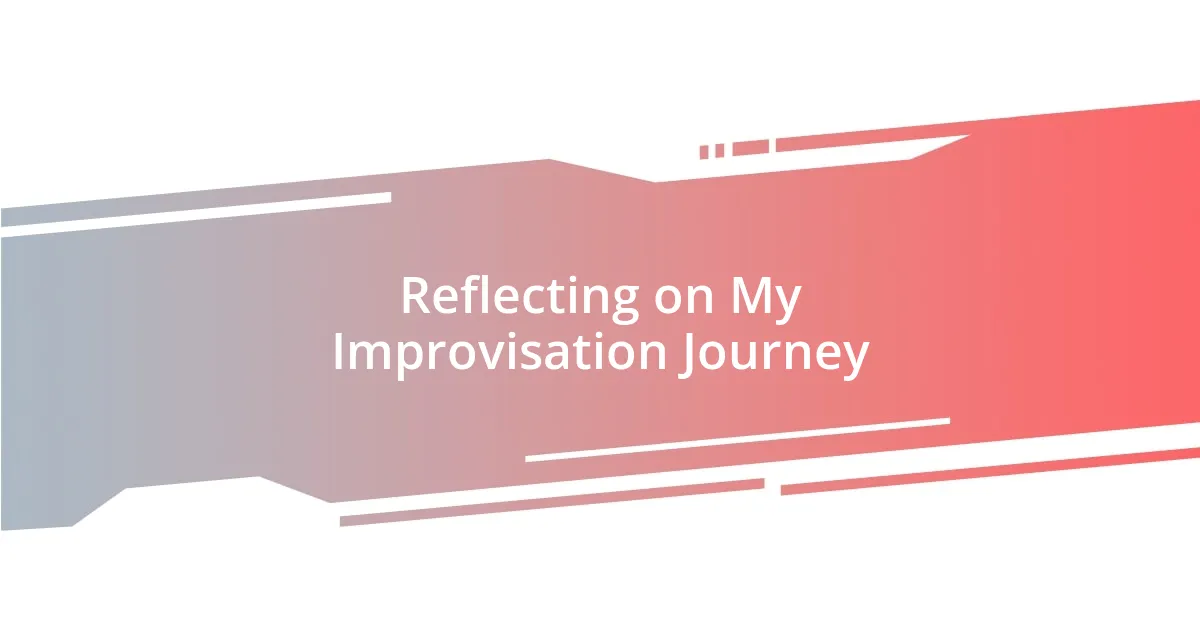
Reflecting on My Improvisation Journey
Reflecting on my improvisation journey evokes a sense of nostalgia and growth. I remember a moment during a class performance when I completely blanked on my line. As panic washed over me, I decided to lean into the space, allowing my fellow improvisers to fill the void. What happened next surprised me: their support not only calmed my nerves but transformed the scene into something even more vibrant than I could have imagined. This taught me the importance of trust—not just in myself but in my partners.
Another defining experience came when I decided to take a risk by suggesting a new game during my improv group’s regular session. My heart raced as I pitched the idea, wondering if they would embrace my spontaneity or dismiss it. To my delight, their enthusiasm ignited a lively energy in the room. Watching everyone dive into this new challenge made me realize how vulnerability can foster creativity. Isn’t it remarkable how stepping outside our comfort zones can lead to thrilling discoveries?
As I look back, what stands out to me is not just the laughter and fun, but the lessons I’ve intertwined with these experiences. Each performance, each collaborative moment, has strengthened my ability to adapt not only on stage but in life. I find myself asking: how can we carry this sense of playfulness and resilience into our everyday interactions? It’s a question that continues to shape my journey, reminding me that improvisation is a valuable tool, ready to show up when we least expect it.

